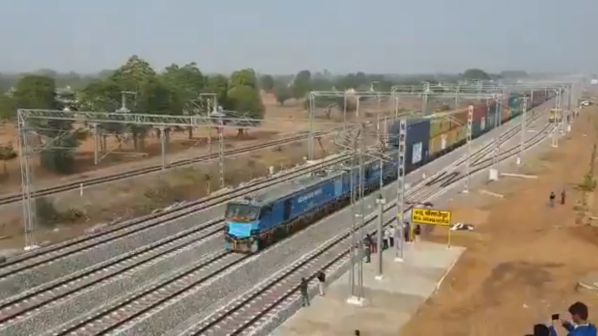THE cost of India’s Dedicated Freight Corridors (DFC) has increased by Rs 385bn ($US 5bn), while the project completion dates are now planned for March 2023, delayed from this June.
Of the proposed 3365km dedicated rail freight corridors in India’s eastern and western flanks, only 657km had been commissioned by March 2021.
The flagship scheme, launched in 2007, was originally expected to have completed within five years at an estimated cost of Rs 281bn for eastern DFC and Rs 165bn for the western DFC. The eastern DFC will be approximately 1506km and link Ludhiana in Punjab with Dankuni in West Bengal. The 2000km western DFC will link Mumbai with Dadri in Uttar Pradesh.
In a recent letter to the Railway Board, the Dedicated Freight Corridor Corporation of India (DFCCI) is understood to have sought an upwards revision of the project cost at Rs 1200bn, sources said. Costs have risen on account of currency fluctuations and Covid with construction costs rising by approximately 12% while land compensation costs have nearly doubled, sources said. So far Rs 137bn of compensation has been paid to farmers for land acquisition, with a further Rs 18.3bn pending.
The DFCs were designed to free up capacity on IR’s mixed traffic network by shifting freight trains to the dedicated corridors, which pass through 68 districts and nine states.
A recent report published by India’s Comptroller and Auditor General says that project implementation has suffered from multiple factors including the delay in finalising plans for the extended 540km stretch on the Eastern Corridor from Sonnagar to Dankuni, insufficient planning for maintenance of DFC rolling stock, and delays in upgrading feeder routes.
Construction of the eastern DFC has also suffered from a lack of investor interest proposed under the PPP model. No final decision has also been taken on a location for the deep sea port on this stretch, nor have any Expression of Interest been launched.
The government has reportedly decided to change the model by offering a component of Viability Gap Funding. The government’s equity for this stretch is likely to be 40% against the last revised estimate of Rs 122bn, sources said.
For detailed data in projects and fleet orders in India, subscribe to IRJ Pro.

